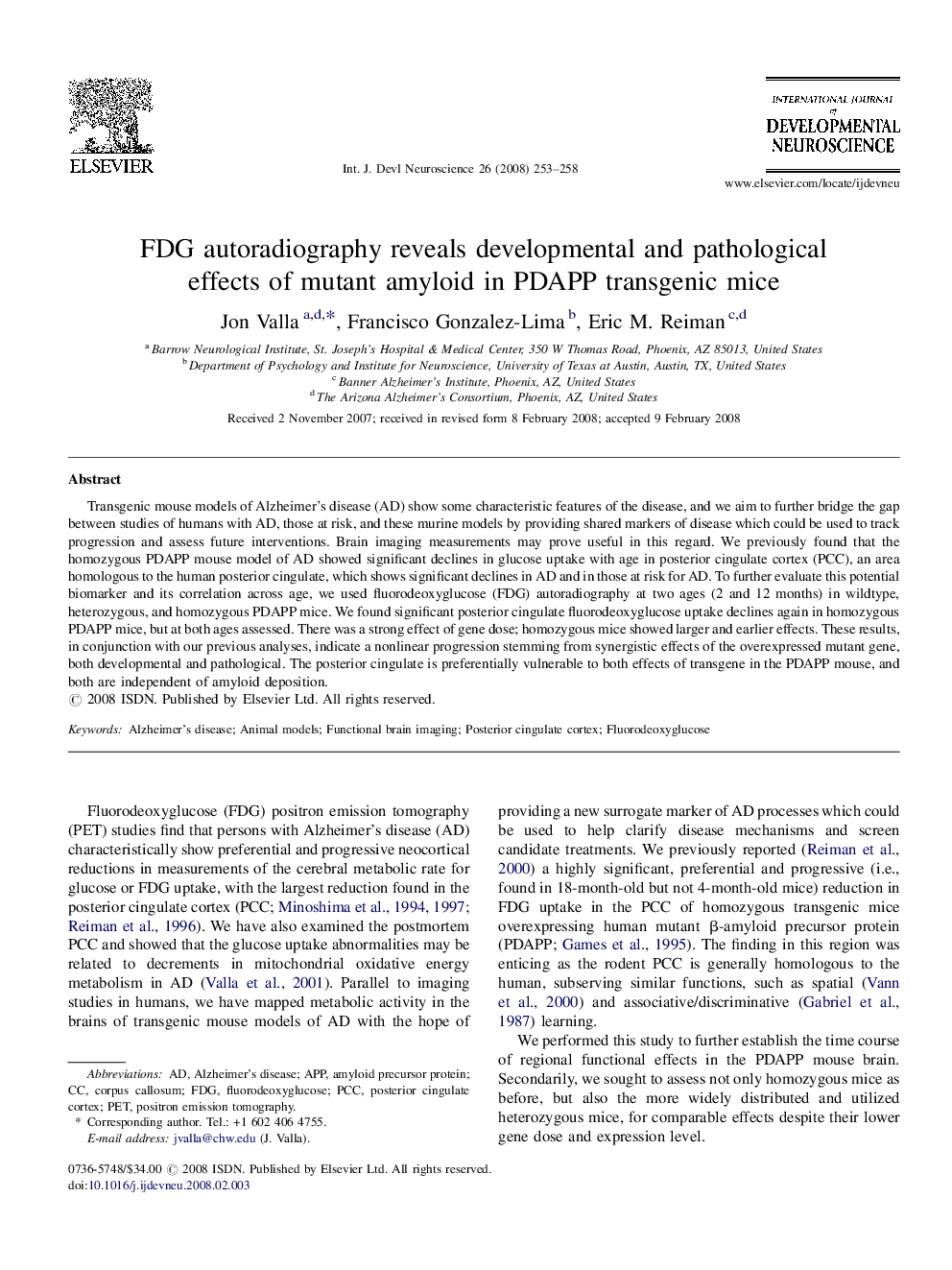| Article ID | Journal | Published Year | Pages | File Type |
|---|---|---|---|---|
| 2787038 | International Journal of Developmental Neuroscience | 2008 | 6 Pages |
Transgenic mouse models of Alzheimer's disease (AD) show some characteristic features of the disease, and we aim to further bridge the gap between studies of humans with AD, those at risk, and these murine models by providing shared markers of disease which could be used to track progression and assess future interventions. Brain imaging measurements may prove useful in this regard. We previously found that the homozygous PDAPP mouse model of AD showed significant declines in glucose uptake with age in posterior cingulate cortex (PCC), an area homologous to the human posterior cingulate, which shows significant declines in AD and in those at risk for AD. To further evaluate this potential biomarker and its correlation across age, we used fluorodeoxyglucose (FDG) autoradiography at two ages (2 and 12 months) in wildtype, heterozygous, and homozygous PDAPP mice. We found significant posterior cingulate fluorodeoxyglucose uptake declines again in homozygous PDAPP mice, but at both ages assessed. There was a strong effect of gene dose; homozygous mice showed larger and earlier effects. These results, in conjunction with our previous analyses, indicate a nonlinear progression stemming from synergistic effects of the overexpressed mutant gene, both developmental and pathological. The posterior cingulate is preferentially vulnerable to both effects of transgene in the PDAPP mouse, and both are independent of amyloid deposition.
